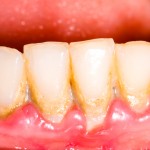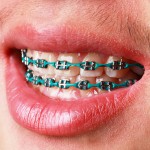
In her debut blog, Ailbhe Madigan summarises a qualitative study from Greece, which explores the needs of informal caregivers of people with psychosis.
[read the full story...]
In her debut blog, Ailbhe Madigan summarises a qualitative study from Greece, which explores the needs of informal caregivers of people with psychosis.
[read the full story...]
This review of the prevalence of tooth grinding and/or clenching in children and adolescents with neurodevelopmental disorders and other developmental anomalies included 77 studies from 2 countries. However a large proportion of the studies were at high risk of bias so the findings need to be interpreted with caution.
[read the full story...]
This Cochrane review of the effects of periodontal treatment on glycaemic control in people with diabetes mellitus and periodontitis updates the 2015 version. The earlier conclusions have changed and there is now moderate‐certainty evidence that periodontal treatment using subgingival instrumentation improves glycaemic control in those with periodontitis and diabetes.
[read the full story...]
Shuranjeet Singh is our new Mental Elf Researcher in Residence. In this blog he explores the role that compassion has to play in the future of mental health research.
[read the full story...]
Alice Potter reviews a trial of CBT for eating disorders, which finds that motivational work may be important for patients with initially low motivation and resistance to therapy.
[read the full story...]
Alejandro Arguelles Bullon summarises the latest Global Burden of Disease study (2019) looking at the prevalence, incidence and impact that mental disorders have on our lives, which shows no reduction in the burden over the last 30 years.
[read the full story...]
This review of the clinical and radiographic findings of orthodontic force application on the dental pulp included 26 studies. While increase in pulpal sensibility clinical response, an immediate decrease in pulpal blood flow, changes in pulp cavity volume, and an increase in the incidence of pulp stone formation the studies were mostly small and of low quality so the certainty of the available evidence is graded as very low.
[read the full story...]
Rudo Dube writes about an Australian study of socially fragmented neighbourhoods and psychological distress among immigrants and non-immigrants in Australia.
[read the full story...]
This review of the prevalence of clinical and radiographic sequelae following traumatic dental injuries to primary teeth included 25 cross-sectional studies. Crown discolouration followed by pulp necrosis with infection were the most common sequelae but the findings should be viewd with caution because the evidence is of very low certainty.
[read the full story...]